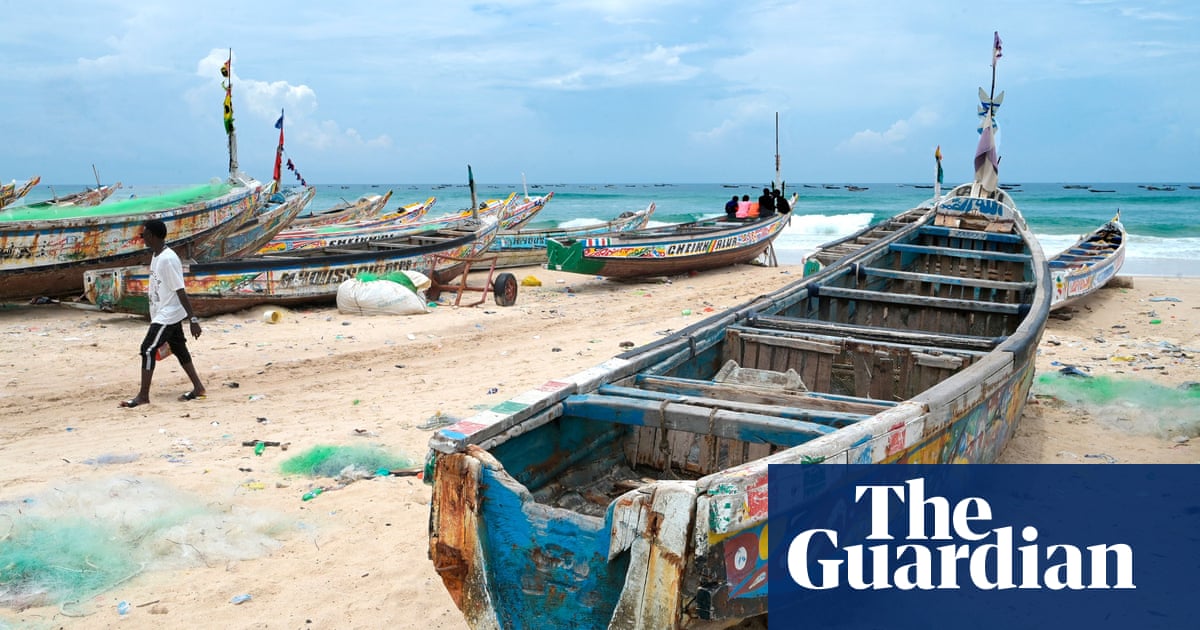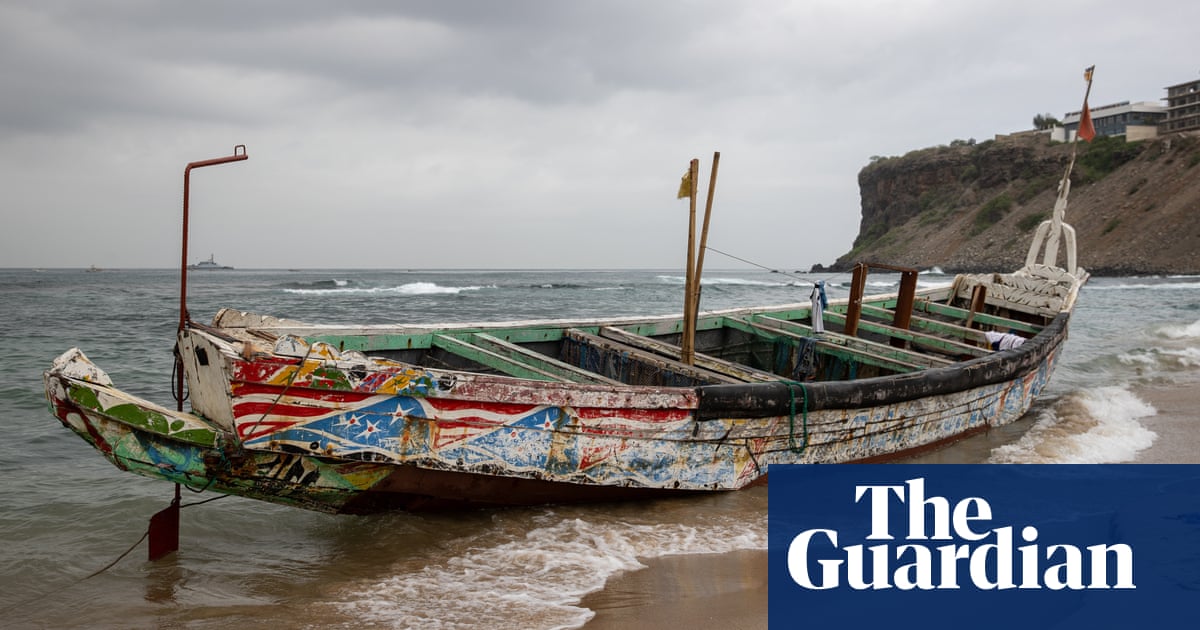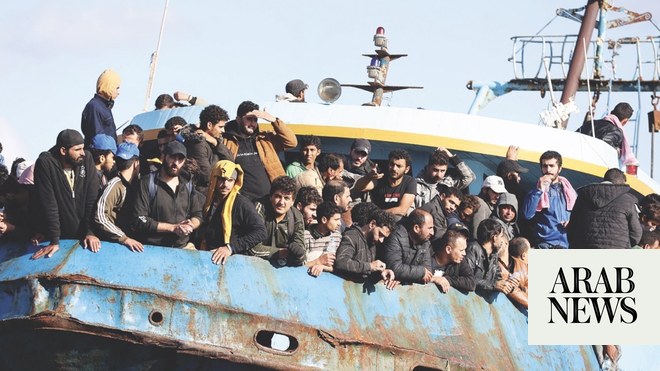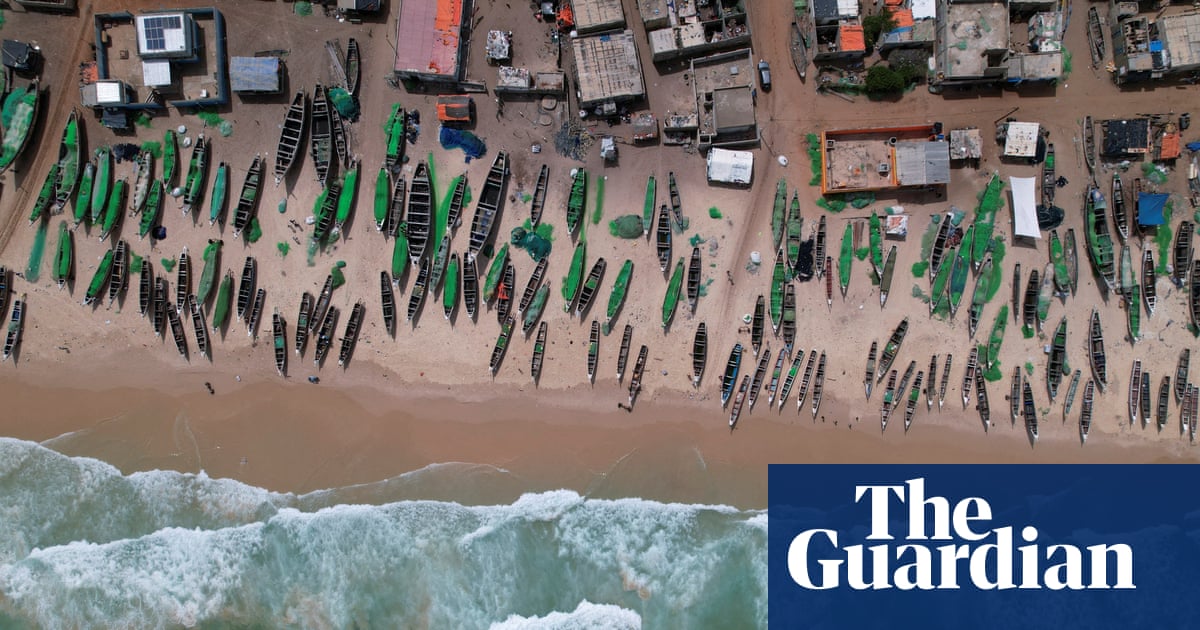
A Spanish NGO alerted authorities from four countries on 20 July about a boat carrying an estimated 130 asylum seekers that was found earlier this week with just 38 survivors and the bodies of seven dead people on board.
Relatives of those onboard said the large fishing vessel had left Fass Boye, a seaside town in Senegal on 10 July, and was heading for Spain’s Canary Islands. The boat was spotted on Monday about 150 nautical miles (277km ) north of the Cape Verdean island of Sal.
“Our organisation … became aware of the departure of the boat on 20 July,” the Walking Borders NGO said in a statement. “The relatives of the people onboard informed us that they had left on 10 July and that 130 people were onboard. We activated our organisation’s search protocol, informing the authorities of the corresponding countries [Senegal, Mauritania, Morocco and Spain] in the rescue of the route between Senegal and the Canary Islands.”
The boat appears to have been left adrift for almost a month at the mercy of powerful trade winds in the Atlantic. The Atlantic migration route from west Africa to the Canary Islands, typically used to reach mainland Spain, is one of the world’s deadliest.
Helena Maleno Garzón, the founder of Walking Borders, wrote in a tweet about the boat on 23 July: “A Senegalese fishing vessel disappeared with more than 120 people on board. They left 14 days ago and the desperate families ask for a reinforcement of search means.”
Initial reports suggested the vessel had sunk, but authorities later clarified that it had been found adrift by the Spanish fishing boat Zillarri, which alerted Cape Verdean authorities.
Spain’s maritime rescue service confirmed that the Spanish fishing boat had rescued 38 people and recovered seven bodieson 14 August.
An official of the tropical tuna fishing company Pevasa, which operates the Zillarri, said the survivors were asking for help and were in a “bad state”.
Among the survivors were four children between the ages of 12 and 16, Flavio Di Giacomo, a spokesperson for the International Organization for Migration, told the Guardian.
The NGO said it was “aware that search efforts have indeed been made” since it raised the alarm but that it considers “that they have not been sufficient”.
“The characteristics of this migratory route mean that these boats can easily get lost or drift away if there is an engine failure,” it added. “We have therefore asked for greater search resources that could have saved more lives.”
It is not yet clear how those onboard died, though some sources said hypothermia and dehydration may have been the causes. Sources said survivors ate the food supplies left by passengers who died during the journey.
“With more resources and more collaboration, these people would have been rescued and saved,” Maleno Garzón told the Guardian.
Most of those who died were born and raised in Fass Boye, and people in the small fishing community there have been in shock.
There is “sadness, consternation, despair and total calm”, Moda Samb, a local councillor, told Agence France-Presse.
Cheikh Awa Boye, president of the local fishing association, said survivors called home from Cape Verde after the rescue. Boye told media two of his nephews were among those missing. “They wanted to go to Spain,” he said.
According to some reports, only one in three boats carrying people from west Africa reach the Canaries. “Safe and regular pathways to migration are sorely lacking, which is what gives room to smugglers and traffickers to put people on these deadly journeys,” the IOM said.
According to the IOM, at least 324 people, excluding the victims from Tuesday’s incident, have died attempting to reach the Canary island from west Africa since the beginning of 2023. Walking Borders suggested the true number could be almost three times higher.
Di Giacomo said: “While the central Mediterranean migration route – from north Africa to Italy – is considered the deadliest one, this one from Senegal to the Canary Islands is just as deadly. The only difference is that we have little information because this route is poorly monitored. These are long journeys, subject to strong Atlantic winds and only a few of those who leave arrive at their destination. We just don’t know what happens to the missing. Surely there are large numbers of so-called ghost shipwrecks out there, incidents that we know nothing about.”












